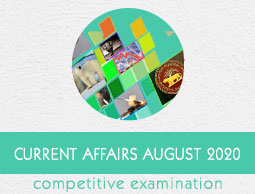
- Current Affairs August 2020
- Current Affairs - Home
- August 2020 - Summary
- Appointments
- Awards
- Bills & Acts
- Books & Authors
- Committees
- Deaths
- Defence
- Economic
- Environment
- Finance
- Important Days
- International
- Miscellaneous
- National
- Persons in News
- Places in News
- Regional
- Reports
- Resignations
- Science & Technology
- Sports
- August 2020 - Exams Resources
- Current Affairs - Quiz
- Current Affairs - Test
- Current Affairs - PDF
Current Affairs August 2020 - Science
1 - NASA, ULA launched Mars 2020 Perseverance Rover Mission to Red Planet
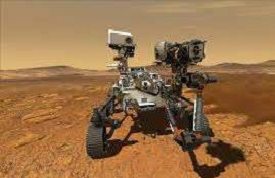
A United Launch Alliance (ULA) Atlas V rocket with NASA’s Mars 2020 Perseverance rover onboard was launched from Space Launch Complex 41 at Cape Canaveral Air Force Station in Florida. The Perseverance rover is part of NASA’s Mars Exploration Program, a long-term effort of robotic exploration of the Red Planet.
NASA's Mars 2020 Perseverance rover mission is on its way to the Red Planet to search for signs of ancient life and collect samples to send back to Earth. The rover's technologies for entry, descent, and landing also will provide information to advance future human missions to Mars.
2 - IIT-M Startup developed wrist-worn health monitoring device for Covid-19
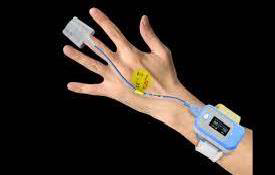
A healthcare Startup at IIT-Madras has developed a device called OXY2 jointly with HELYXON. OXY2 is now commercially available. It serves as a remote patient monitoring solution.
OXY2 is portable, wireless and can be clipped on to patient’s finger and data is streamed to a mobile phone (via bluetooth) or central monitoring system(from phone to system via internet). The temperature is measured at the user’s armpit, whereas blood oxygen level, and other parameters are measured at the finger.
3 - Two NASA Astronauts safely splash down from ISS
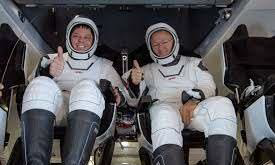
Two NASA astronauts, Robert Behnken and Douglas Hurley, splashed down safely in the Gulf of Mexico for the first time in a commercially built and operated American crew spacecraft. The crew returned from the International Space Station to complete a test flight.
The Demo-2 test flight is SpaceX’s final test flight and is providing data on the performance of the Falcon 9 rocket, Crew Dragon spacecraft and ground systems, as well as in-orbit, docking, splashdown, and recovery operations.
4 - Microwave device 'Atulya' to disintegrate novel Coronavirus unveiled

Union Minister Nitin Gadkari unveiled a microwave device named ‘Atulya’. It can disinfect any premises in just 30 seconds, disintegrating COVID-19 virus. Certified by the Defence Research and Development Organization (DRDO) and based on French and American standards, the device is 100% Made in India and has been manufactured under the aegis of the MSME.
‘Atulya’ microwave like device can be used to disinfect any premises up to five metres area. The device disintegrates the COVID-19 virus with the help of differential heating in the range of 56 to 60 degrees Celsius temperatures.
5 - ISRO, IISc Bengaluru develop sustainable process to make space bricks on lunar surface
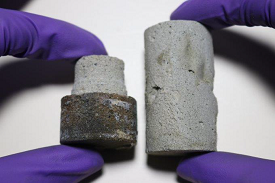
In a significant step towards space exploration, a team of researchers from the Indian Space Research Organisation (ISRO) and the Indian Institute of Science (IISc) in Bengaluru has developed a sustainable process to make space bricks on the lunar surface. The process enables making load bearing bricks by using lunar soil, bacteria and guar beans.
Named as space bricks, it could be used to assemble structures for habitation on the moon surface in future. The process developed now uses urea sourced from human urine, which could be mixed with lunar soil to build structures on the moon.
6 - Chandrayaan 2 Orbiter has captured the Moon images of “Sarabhai” Crater
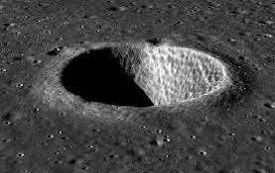
Chandryaan-2 has captured images of the Moon and one of the craters has been named after Vikram Sarabhai, the father of the Indian space programme. The Sarabhai Crater is around 250 to 300 kilometres east of the crater, where the Apollo 17 and Luna 21 Missions had landed.
The Sarabhai Crater, captured in 3D images, shows that it has a depth of around 1.7 kilometres taken from its raised rim and the slope of crater walls is between 25 to 35 degrees.
7 - Astronomers discover ‘Baby’ Galaxy 12 billion light years away
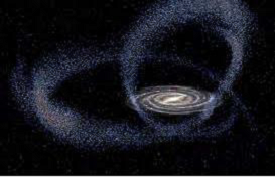
Astronomers have discovered the most distant look-alike galaxy of our Milky Way. The galaxy called SPT0418-47 is 12 billion light-years away from earth. The astronomers used Atacama Large Millimeter Array (ALMA Radio Telescope) located in the Atacama Desert of northern Chile.
The research was led by Francesca Rizzo of the Max Planck Institute for Astrophysics in Germany. The research was published in a peer-reviewed journal Nature. The SPT0418-47 has a rotating flat disk similar to our galaxy.
8 - DIAT, Pune launched “Pavitrapati” and “Aushada Tara”
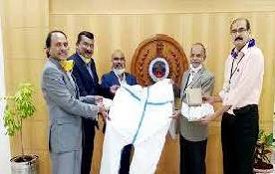
Pune based Defence Institute of Advanced Technology, DIAT (DU) developed a Nanofibres of Ayurvedic based Biodegradable Face Mask, which acts as a virus neutraliser to resist against the bacteria / virus, and has named “Pavitrapati”. DIAT has signed Transfer of Technology agreement with Kolhapur based Textile Company M/s. Siddheshwar Techtessile Pvt. Ltd.
DIAT has also developed anti-microbial body suit in the name of “Aushada tara”. This suit has superhydrophobic, breathing, anti-microbial, comfort feeling properties.
9 - Chandrayaan-2 completed 1 year around moon
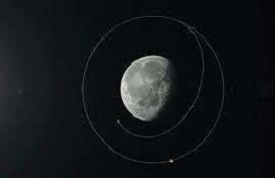
India’s second lunar mission Chandrayaan-2 has completed a year around the moon in the lunar orbit. The orbiter has completed 4,400 orbits around the moon and all its instruments are currently performing well.
Chandrayaan-2 acquired images consisting of nearly 4 million sq. km area of moon surface. It also has images of Balmer-Kapteyn (B-K) basin region, which is located on the east limb of the moon. Chandrayaan-2 was launched for detailed studies of topography, mineralogy, surface chemical composition etc.
10 - China launched fifth Gaofen-9 series Earth observation satellite

China launched its latest Gaofen-9 Earth observation satellite and two smaller payloads from the Jiuquan launch center. Gaofen-9 is a multi-functional optical remote-sensing test satellite and is developed by the People's Liberation Army. Gaofen is meant for verifying new technologies related to communications, navigation, and remote sensing and provide all-weather, all-day coverage.
The China Aerospace Science and Technology Corporation (CASC) confirmed the launch mission success and the payloads. Gaofen (GF) is a series of Chinese civilian remote sensing satellites for the state-sponsored program China High-definition Earth Observation System (CHEOS).
11 - ASTROSAT detected UV light from a galaxy, 9.3 billion light-years away

Inter-University Centre for Astronomy and Astrophysics (IUCAA) confirmed that AstroSat, India's first multi-wavelength satellite, has detected an extreme ultraviolet (UV) light from a galaxy, which is 9.3 billion light-years away from Earth. AstroSat is the first dedicated Indian astronomy mission aimed at studying celestial sources in X-ray, optical and UV spectral bands simultaneously.
AstroSat has five unique X-ray and ultraviolet telescopes working in tandem. The team comprised of scientists from India, France, Switzerland, the USA, Japan and The Netherlands, observed the galaxy.
12 - ISRO signed MoU with VSSUT to set up Space Innovation-cum-Incubation Centre

Indian Space Research Organisation (ISRO) has signed a Memorandum of Understanding (MoU) with the Veer Surendra Sai University of Technology (VSSUT), Burla in Odisha to set up a Space Innovation-cum-Incubation Centre. VSSUT became the first University in the country to sign such MoU with ISRO.
As part of the agreement, ISRO will offer technical consultancy support and financial assistance of Rs. 50 lakh to the VSSUT for development of infrastructure. A 'sounding rocket', developed by the VSSUT Innovation Club of the institute had found a place in the Limca Book of Records.
13 - IIT Alumni Council signed MOU with Russia for building Quantum Computers
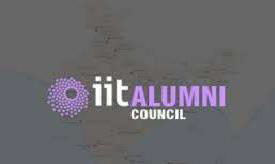
Indian Institute of Technology's (IIT) Alumni Council signed an agreement with Russia's Lomonosov Moscow State University (MSU) and Russoft, to build the world's largest and fastest hybrid quantum computer in India. This will support solutions for solving infrastructure challenges in the areas of healthcare, agriculture, transport and logistics, pollution and weather forecast to achieve the mission of Atma Nirbhar Bharat.
Under this agreement, the Russian state-owned companies will transfer critical modules in cryogenics, cryptography and modularised cloud management technology to IIT Alumni Council. Currently, IIT Alumni Council has 25,000+ reqistered volunteer members.
To Continue Learning Please Login